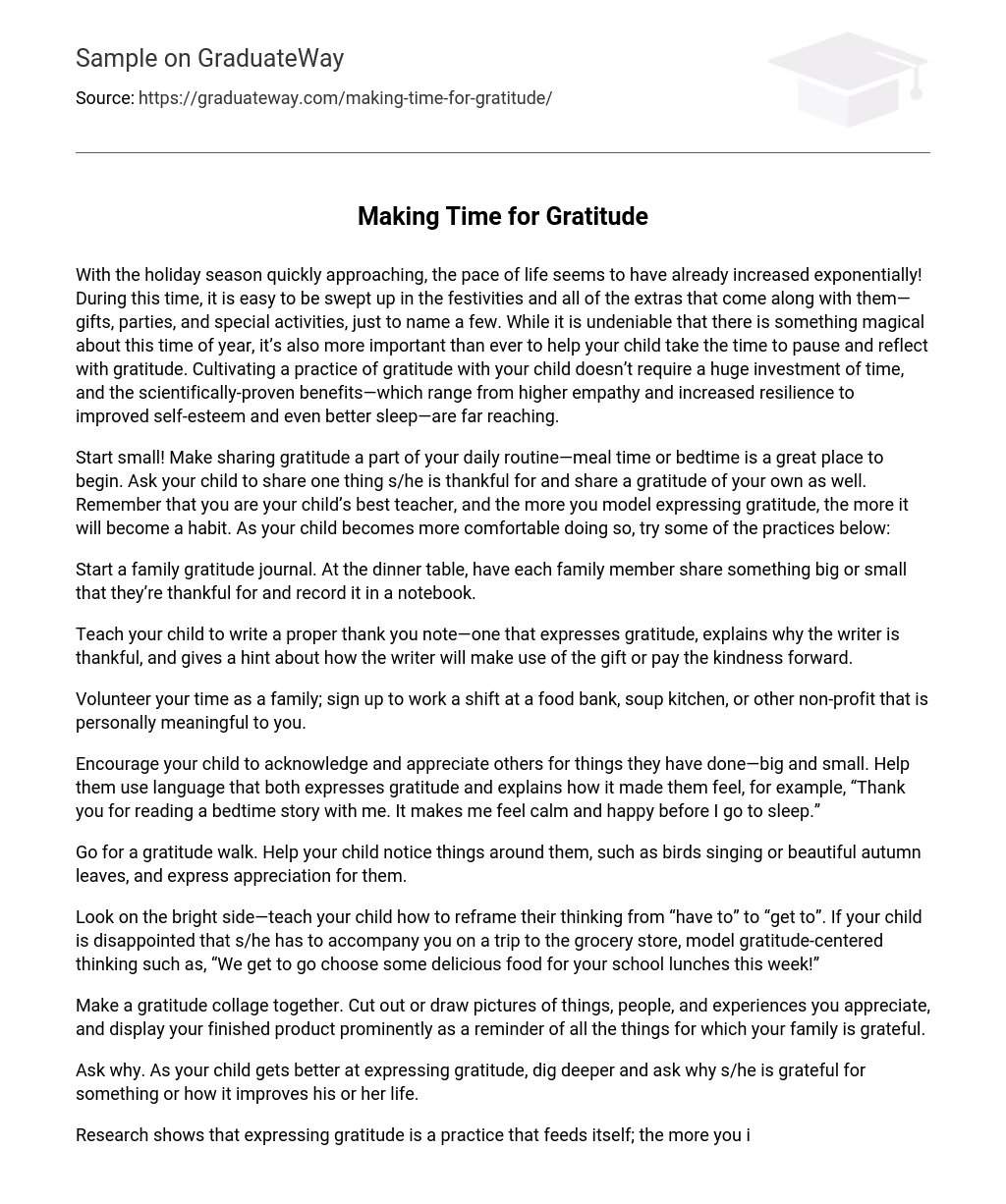With the holiday season quickly approaching, the pace of life seems to have already increased exponentially! During this time, it is easy to be swept up in the festivities and all of the extras that come along with them—gifts, parties, and special activities, just to name a few. While it is undeniable that there is something magical about this time of year, it’s also more important than ever to help your child take the time to pause and reflect with gratitude. Cultivating a practice of gratitude with your child doesn’t require a huge investment of time, and the scientifically-proven benefits—which range from higher empathy and increased resilience to improved self-esteem and even better sleep—are far reaching.
Start small! Make sharing gratitude a part of your daily routine—meal time or bedtime is a great place to begin. Ask your child to share one thing s/he is thankful for and share a gratitude of your own as well. Remember that you are your child’s best teacher, and the more you model expressing gratitude, the more it will become a habit. As your child becomes more comfortable doing so, try some of the practices below:
Start a family gratitude journal. At the dinner table, have each family member share something big or small that they’re thankful for and record it in a notebook.
Teach your child to write a proper thank you note—one that expresses gratitude, explains why the writer is thankful, and gives a hint about how the writer will make use of the gift or pay the kindness forward.
Volunteer your time as a family; sign up to work a shift at a food bank, soup kitchen, or other non-profit that is personally meaningful to you.
Encourage your child to acknowledge and appreciate others for things they have done—big and small. Help them use language that both expresses gratitude and explains how it made them feel, for example, “Thank you for reading a bedtime story with me. It makes me feel calm and happy before I go to sleep.”
Go for a gratitude walk. Help your child notice things around them, such as birds singing or beautiful autumn leaves, and express appreciation for them.
Look on the bright side—teach your child how to reframe their thinking from “have to” to “get to”. If your child is disappointed that s/he has to accompany you on a trip to the grocery store, model gratitude-centered thinking such as, “We get to go choose some delicious food for your school lunches this week!”
Make a gratitude collage together. Cut out or draw pictures of things, people, and experiences you appreciate, and display your finished product prominently as a reminder of all the things for which your family is grateful.
Ask why. As your child gets better at expressing gratitude, dig deeper and ask why s/he is grateful for something or how it improves his or her life.
Research shows that expressing gratitude is a practice that feeds itself; the more you intentionally acknowledge the things for which you are grateful, the more things for which you are grateful you notice in your life. Helping your child to begin building this habit early on is a great gift to give them during this holiday season!





